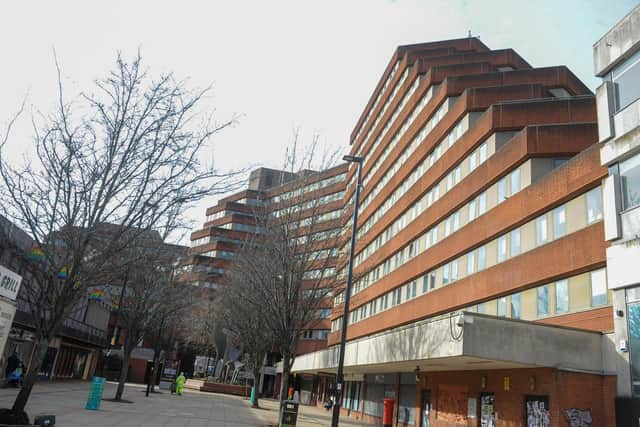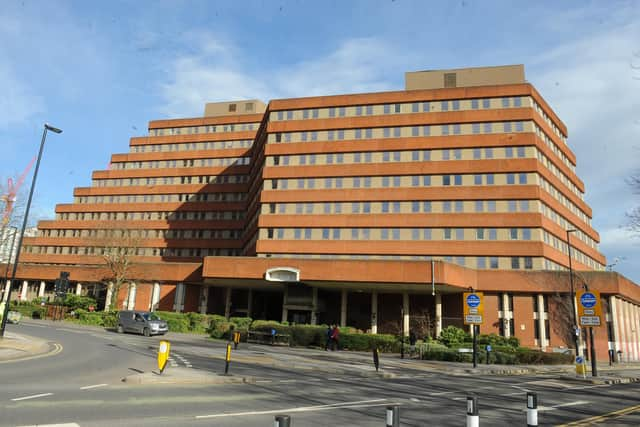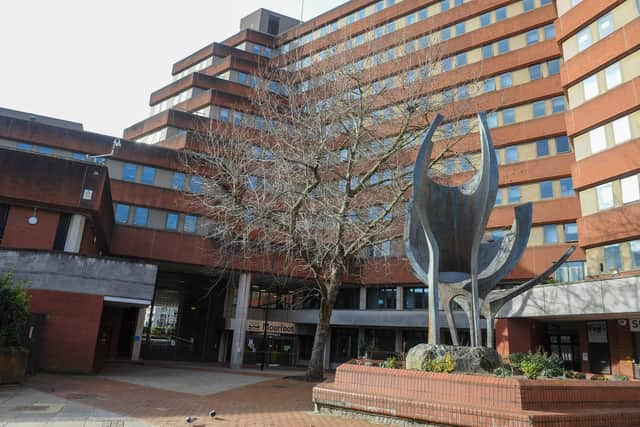Sheffield's largest office building Moorfoot could be flattened in plan for more city centre homes
and live on Freeview channel 276
The future of the huge office building - the largest in Sheffield - is ‘being considered’ in a post-pandemic plan to dramatically increase the number of residents.
A council report states the Moorfoot area will be targeted at young professionals and promoted as a ‘prime location for city core living’.
WHY COULD MOORFOOT BE FLATTENED?


Advertisement
Hide AdAdvertisement
Hide AdIt also states: “The future of the Moorfoot Building itself (adaptation or replacement) is currently being considered’ due to the emergence of hybrid working.”
The stepped-pyramid, red-brick building is a landmark between the bottom of The Moor and St Mary’s Gate.
It was built in 1981 and occupied for years by the Manpower Services Commission and then the Civil Service.
City Council staff moved in when they left in 2011.


The Strategic Vision document states that working from home in the pandemic has led to new working patterns.
Advertisement
Hide AdAdvertisement
Hide AdIt adds: “Options for a new accommodation strategy are being worked through as part of how staff will work in the future given the emergence of hybrid working models.”
WHY – AND HOW MANY - NEW RESIDENTS ARE NEEDED?


More residents could bring back the buzz to the city centre which has a record number of vacant stores due to online shopping and the pandemic.
The city council also has a target of building 53,000 new homes by 2039.
The vision sets out an ambition to ‘repopulate’ the city centre with 20,000 new homes to bring a ‘permanent critical mass of people’ to create vitality and vibrancy.
BUSINESS STORIES: Boots under siege from thieves and thugs
Advertisement
Hide AdAdvertisement
Hide AdIt sets out plans for five distinctive new neighbourhoods: Moorfoot, Castlegate, Wicker Riverside, Furnace Hill and Neepsend Gateway.
It adds: “Delivering more homes will provide much-needed housing and importantly act as the ‘glue’ to bring together and strengthen the key components that make up the city centre: culture, arts, work and leisure for example.
“More homes in the city centre will also reduce the impact of urban sprawl on the surrounding countryside whilst positively contributing to the low carbon agenda by reducing the demand on Sheffield’s wider road and public transport network.
“Delivering this strategic vision will not happen if we rely solely on market forces’.
Advertisement
Hide AdAdvertisement
Hide AdMoorfoot severed the link between Sheffield’s main shopping street and London Road. A pedestrian tunnel was built but never opened to the public.
